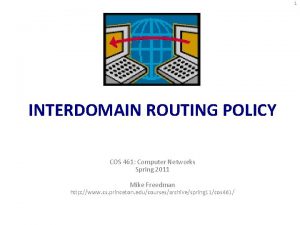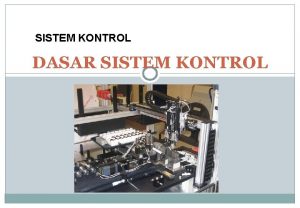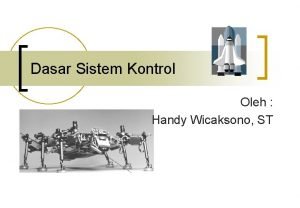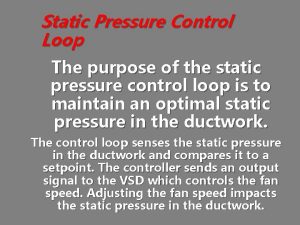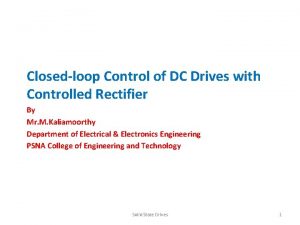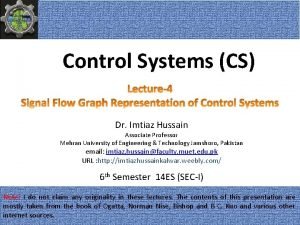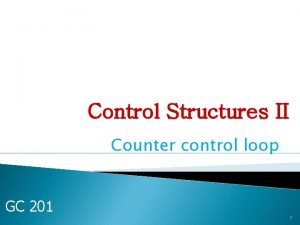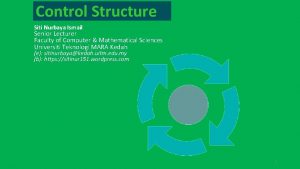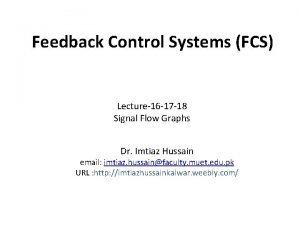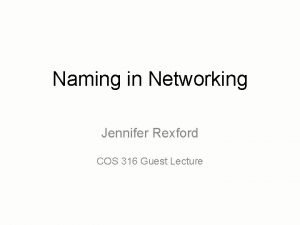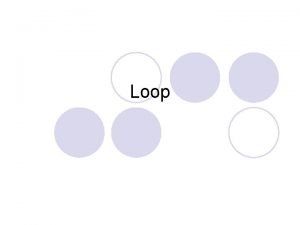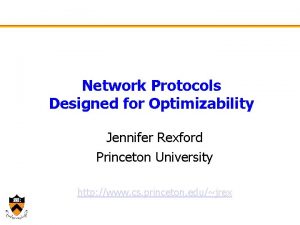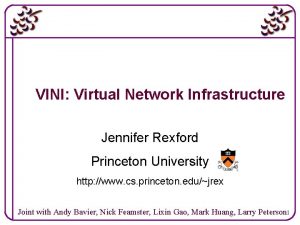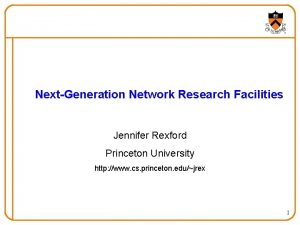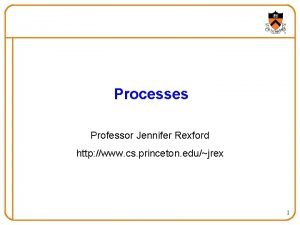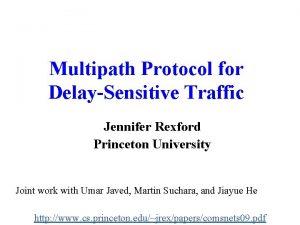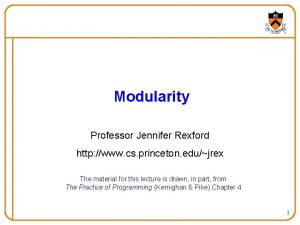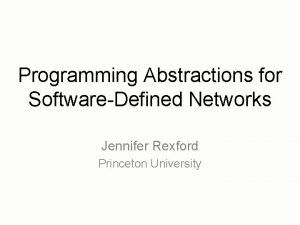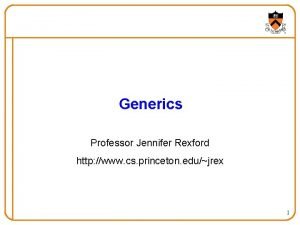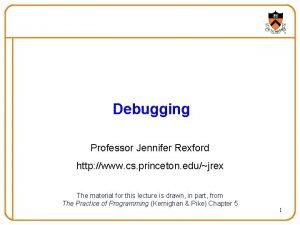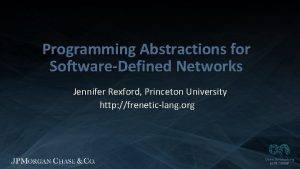Closing the Network Control Loop Jennifer Rexford Princeton




















- Slides: 20

Closing the Network Control Loop Jennifer Rexford, Princeton University 2020

Overlay Virtualization Load Balancing Traffic Engineering Do. S Mitigation Programmability From Top-to-Bottom and End-to-End … SDN Controller DPDK User space NIC 5 G Mobile Network NIC Kernel stack XDP/e. BPF

What Will Network Owner’s Do? • What will network owners do • We believe they will want to with this new flexibility? run their networks better!

Adding New “Dials” • • • Traffic Performance Cyberattacks Failures Signal strength <Your measurement here>

Adding New “Knobs” • • • Drop Mark Rate-limit Reroute Hand-off <your knob here>

Closed-Loop Control Analyze Measure (dials) Adapt (knobs)

Queue Length Example #1: Microbursts 5 x Microbursts 3 x 1 x 16: 00 • 0: 00 8: 00 Time in day (24 h) 16: 00 Small timescale traffic bursts • • • Long queues caused by incast, attacks, etc. Lead to high packet delay and loss … despite low average link utilization

Example #1: Microburst Measurement • Data-plane measurement and analysis • Backlog in the queue • A flow’s own contribution to the queue 55% 10% Con. Quest: "Fine-grained queue measurement in the data plane" in Co. NEXT’ 19.

Example #1: Microburst Mitigation • Data-plane adaptation • • Drop or mark an arriving packet probabilistically Based on its flow’s contribution to the queue 55% 10%

Example #2: Distributed Denial-of-Service Attacks • DDo. S attacks • • • DNS DNS reflection attack SYN flooding HTTP flooding Slowloris attack Attacker . . . �� Overwhelm the victim • Exhausting network and server resources �� Victim

Example #2: DDo. S Detection • Data-plane measurement and analysis • • • Identify suspected victim destinations (key Dst. IP) … receiving traffic from distinct senders (attribute Src. IP) … in excess of a threshold (threshold T) Key select Dst. IP where distinct(Src. IP) > T Attribute Threshold Beau. Coup: “Answering many network traffic queries, one memory update at a time” in SIGCOMM’ 20

Example #2: DDo. S Mitigation • Data-plane adaptation • • • DNS Drop or rate-limit packets to suspected victims Run stateful firewall for suspected victims Attacker Pushback upstream toward the senders �� . . .

Example #3: Path Performance • Network path diversity • Load balancing to achieve good performance • • Track the performance (load, loss, delay) of paths Split traffic effectively over the multiple paths

Example #3: Path Performance Monitoring • Data-plane tracking of path performance • E. g. , lowest maximum link utilization • E. g. , minimum end-to-end latency or loss 10% 30% 25% 20% 50% 20% Probes along reverse path 30% 10% 50% 10%

Example #3: Performance-Aware Load Balancing • Data-plane adaptation to direct traffic over the best path • Sending packets in the forward direction • … along the path with the best performance 25% 30% 10% 20% 50% Contra: "A programmable system for performance-aware routing” (NSDI’ 20)

Enabler: Programmable Data Planes p 4. org Registers ALU Memory Parser Deparser Match. Action Table Stages

Challenges: Resource Limitations Limited depth # bits Limited # registers and # of accesses Registers ALU Memory Parser Limited # rules Limited ALU operations Deparser Match. Action Table Stages

Solution: Compact Data Structures • Approximate analysis is fine • • Microbursts: size estimate for just the large flows DDo. S: rough count for large #s of distinct sources Path performance: rough estimates for best paths Data structures can fit in data-plane registers • • Sketch (e. g. , Bloom filter, count-min sketch, etc. ) Small hash table (e. g. , cache of the popular keys)

Grand Challenge High-level goals Distributed software Compiler Controller v. Switch control loop Switch OS NIC NI C v. Switch switch NI C

Thank You jrex@cs. princeton. edu https: //www. cs. princeton. edu/~jrex/ 2020
 Assembly language instruction
Assembly language instruction Gao rexford conditions
Gao rexford conditions Diagram blok open loop
Diagram blok open loop Fifth gear loop the loop
Fifth gear loop the loop Open loop vs closed loop in cars
Open loop vs closed loop in cars Manakah yang lebih baik open loop atau close loop system
Manakah yang lebih baik open loop atau close loop system Do while
Do while Fingerprint basics
Fingerprint basics Multi loop pid controller regolatore pid multi loop
Multi loop pid controller regolatore pid multi loop Pressure control loop
Pressure control loop Closed loop control of dc drives
Closed loop control of dc drives Non touching loop in control system
Non touching loop in control system Counter controlled loop java
Counter controlled loop java Control loop performance monitoring
Control loop performance monitoring Loop control structure
Loop control structure Non touching loop example
Non touching loop example Open loop control motor learning
Open loop control motor learning Loop control structure
Loop control structure Pics princeton
Pics princeton Cos316 princeton
Cos316 princeton Princeton iac
Princeton iac

